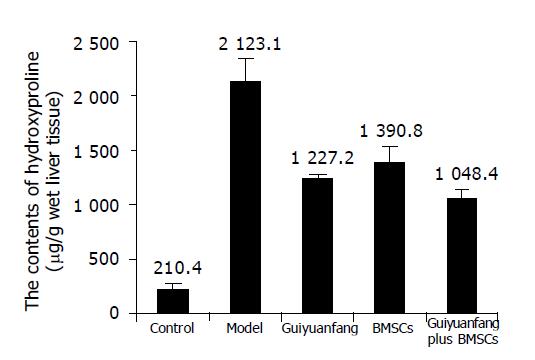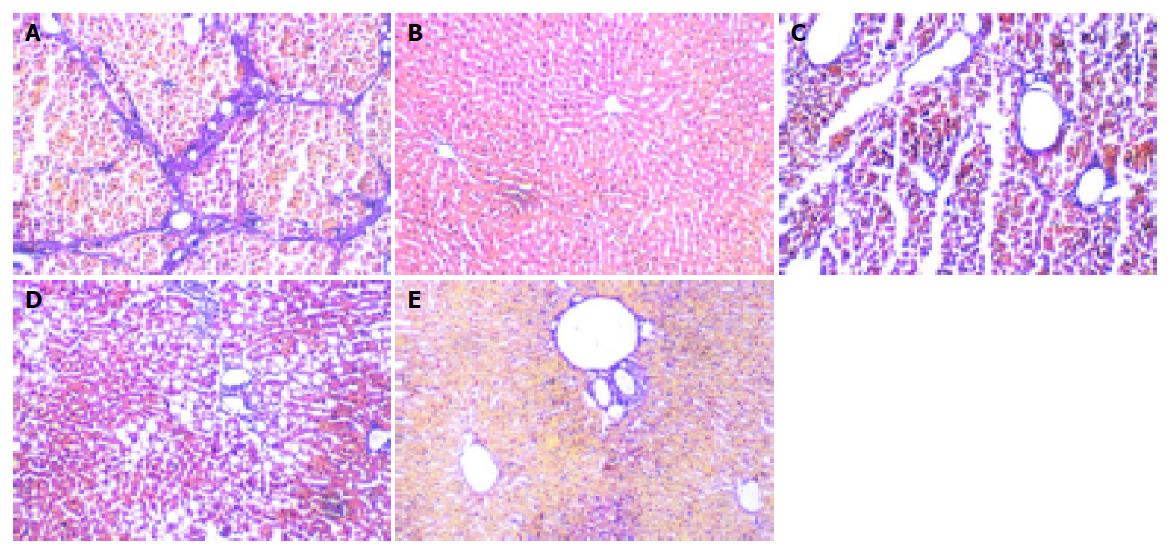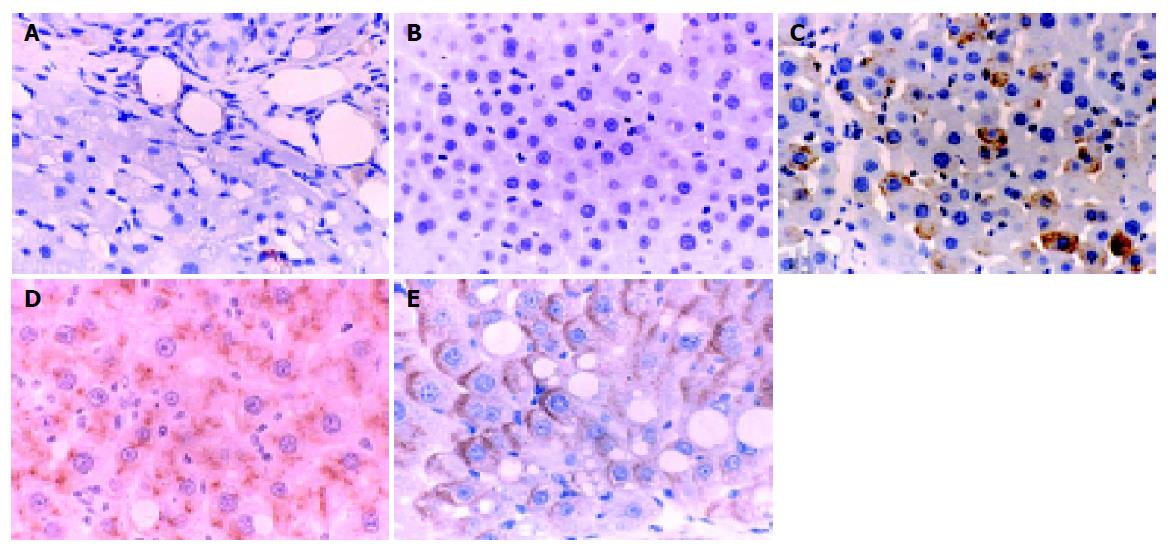Copyright
©2005 Baishideng Publishing Group Inc.
World J Gastroenterol. Feb 28, 2005; 11(8): 1155-1160
Published online Feb 28, 2005. doi: 10.3748/wjg.v11.i8.1155
Published online Feb 28, 2005. doi: 10.3748/wjg.v11.i8.1155
Figure 1 Effects of Guiyuan fang and BMSCs on hydroxyproline levels of liver fibrosis tissue (μg/g wet liver).
Figure 2 VG staining showing fibrin in liver tissue (100×).
A: In model rats, there was obvious nodular fibrosis with deposition of well-delineated fibrosis septa, extensive collagen deposition, which were continuous and extended throughout each section, with mature collagen fibrils bridging portal regions and vascular structures, including perivenular ballooning degeneration of hepatocytes; B: In control livers, only minimal collagen staining was present; no fibrosis was detected in this group; C: In Guiyuanfang group, collagen deposition decreased; D: In BMSCs group, few collagen deposition. E: The appearance of bridging collagen fibers was prevented almost completely in rats treated with Guiyuanfang plus BMSCs. Only occasional short fibril fragments could be visualized. Most liver tissues were restored to normal organization.
Figure 3 The expression of uPA in liver tissue (400×).
A: In model group, there was very weak uPA expression; B: There was no expression of uPA in the normal group; C: Guiyuanfang group; D: Autologous BMSCs transplantation group; E: Guiyuanfang plus autologous BMSC transplantation group.
Figure 4 Fate of transplanted BMSCs 4 wk after transplantation.
The differentiation of transplanted BMSCs in liver fibrosis environment. A: Some transplanted stem cells have migrated into parenchyma, exhibiting the morphology of hepatocyte (BMSCs group, 200×); B: Most transplanted cells were distributed at portal region (Guiyuanfang plus BMSC group, 200×); C: Some transplanted stem cells exhibited the morphology of bile epithelium cells or hepatocyte (Guiyuanfang plus BMSC group, 400×); D: Double immunohistochemical staining showed that the BrdU-labeled cells were fully integrated in the liver parenchyma, along with the expression of cytokeratin-18, the liver epithelial specific marker (Guiyuanfang plus BMSCs group, 400×).
- Citation: Wu LM, Li LD, Liu H, Ning KY, Li YK. Effects of Guiyuanfang and autologous transplantation of bone marrow stem cells on rats with liver fibrosis. World J Gastroenterol 2005; 11(8): 1155-1160
- URL: https://www.wjgnet.com/1007-9327/full/v11/i8/1155.htm
- DOI: https://dx.doi.org/10.3748/wjg.v11.i8.1155












